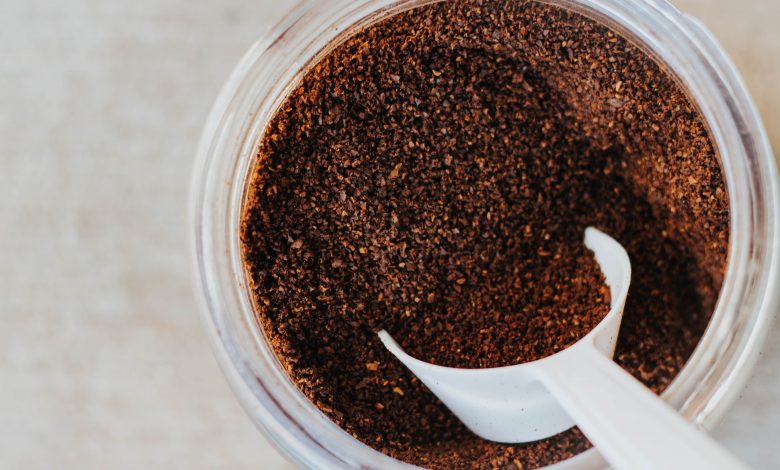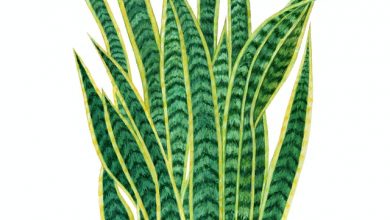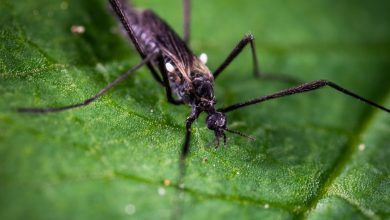How to Use Coffee Grounds in the Garden

If you’re a daily coffee drinker, hearing that you can put your used coffee grounds to use in the garden is probably music to your ears. Instead of throwing away coffee waste every day, you now have an outlet to put that waste to good use. Believe it or not, though, not everything you read on the internet is true. Before you start sprinkling coffee grounds all across your yard, you need to know precisely how to use coffee grounds in the garden.
Why are Coffee Grounds Good for Your Garden?
Let’s start with the good news about coffee grounds. Coffee grounds can effectively be used in a compost pile, as part of a fertilizer mix, as worm food, and as an insect and weed repellant.
However, there are varying degrees of how effective coffee grounds can be for each of these above uses. Used coffee grounds are perfect in your compost pile but must be used selectively as fertilizer. Further, while there are many claims of coffee grounds being effective at keeping unwanted pests and weeds out, the evidence is inconclusive, and you’ll need to experiment on your own to see the actual results.
There is a fine line between coffee grounds being helpul or being harmful to your garden. Below, we’ll show you the areas to take caution, but also the times when coffee grounds can shine.
Why are Coffee Grounds Bad for Your Garden?
Coffee is high in acid, and only specific plants can benefit from an acidic composition. Tomatoes are one of the most common plants that will have their growth stunted if coffee grounds are used in their soil. Coffee grounds in their raw form can often be harmful to even acid-loving plants, and they are best used when combined with other materials.
Additionally, your soil may already be rich in nitrogen or acid, and too much of these substances will stunt the growth of your plants. Fresh coffee grounds will likely have too much acidity to be of any benefit and will harm most plants. The caffeine level in clean coffee grounds can also damage your garden.

What Plants Benefit from Coffee Grounds?
Acid-loving plants will benefit the most from adding coffee grounds to the soil. Some common acid-loving plants are azaleas, hydrangeas, carrots, radishes, and blueberries. If you’re building a raised garden for vegetables, consider grouping your plants based on what type of soil they prefer. A raised garden consisting of blueberries, radishes, and carrots can provide you with not only a colorful and bountiful garden, but also a place where you can productively discard your coffee grounds.
Coffee Grounds in Compost
The best use for coffee grounds, if you don’t have acid-loving plants, is in your compost pile. Creating a compost pile is a great way to take your excess waste and put it to use in creating rich soil mixtures that can eventually be used in flower beds and raised gardens. But be careful not to use the raw grounds as a high percentage of your pile. At most, coffee grounds should make up ten percent of the total materials in your compost pile.
Compost piles thrive when they consist of two ingredients: brown compost material, and green compost material. You’ll want to target a ratio of 4:1 in favor of the brown compost material to have the right mixture. While coffee grounds are brown in color, for your compost pile, they are considered a green material, as they contain nitrogen. Other forms of green compost materials include grass clippings, eggshells, vegetables, fruits, and tea bags.
Green compost materials are high in protein and nitrogen, while brown materials are high in carbon or carbohydrates. Examples of brown compost materials you can use are napkins, coffee filters, fallen leaves, twigs, bark, and cotton.
You will read some articles telling you that newspaper and cardboard can also be useful as brown compost, but this is false information. Newspaper ink can be toxic, and newsprint is bleached with dioxins that can cause cancer. Cardboard will also usually be accompanied by glue and could include chemical fillers that do nothing but harm.
As the material in your compost pile breaks down, you’ll have a constant source of rich nutrients to add to your soil. At the same time, you’ll be saving a landfill from hundreds of pounds of waste.

Coffee Grounds as a Fertilizer
A common misconception about coffee grounds is that they can be effective as a fertilizer because they are high in nitrogen, an essential component of plant growth. However, coffee grounds may be too high in nitrogen and cause plants not to grow correctly. You’ll want to test your soil to see current nitrogen levels before adding coffee grounds to the mix.
Conveniently, you can test your soil right from home and see what nutrients it lacks. For less than ten dollars, you can buy a kit from your local hardware store that will test your soil for a variety of levels, such as nitrogen, pH, potassium, and phosphorus.
Nitrogen can boost plant growth, but too much nitrogen can lead to plants growing too quickly. If you notice yellow, brown, or wilting leaf edges on your plants, or large plants with little flowers, you may have too much nitrogen in the soil.
If you end up with too much nitrogen, try laying an extra layer of mulch on top of the soil. Eventually, the mulch will help pull excess nitrogen out of the ground. Luckily, the cheaper the mulch, the more nitrogen the wood scraps will soak up.
When using coffee grounds as a fertilizer for acid-loving plants, you can use either fresh or used grounds. Fresh grounds will have higher acidity than used grounds, and it’s possible the acidity could be too high for even the acid-loving plants.
If you’re considering using fresh grounds, test your soil in advance for pH levels. The higher the pH, the lower the amount of acid. The range you want to target is 6.0 to 8.0 pH, so use this as a guide to whether or not you add fresh or used coffee grounds to the soil.
While coffee does contain nutrients that plants like potassium and magnesium, they lack phosphorus, which plants need to flower and produce fruit, as well as calcium, another mineral plants love.

Coffee Grounds for Worm Food
Worms love to eat coffee grounds, so they make an excellent addition to your compost pile. If you line your compost pile with coffee grounds on the outside, it can attract worms to make a home in the compost.
Be careful not to overload your compost pile with coffee, though, because too much acidity can kill the worms. If you’d like to ensure the proper pH levels, you can test the pile with a kit. The best pH range for worms is between 6.0 and 8.0 pH. You can help neutralize the acidity if the pH is lower than 6.0 using eggshells.
Coffee Grounds to Repel Insects and Weeds
Anecdotally, coffee grounds are effective at preventing weeds from growing and keeping out harmful insects such as snails and slugs. As with any technique passed by word of mouth, results may vary. If you have a slug problem, you can try mixing coffee grounds into the soil or build a barrier to the part of the garden you want to prevent insects from getting into.
You can also experiment using coffee grounds to try and stem the tide of an especially pervasive patch of fast-spreading weeds. Fresh grounds will likely be more productive, but you can experiment with both.
Bottom Line on Coffee Grounds in the Garden
One of the first takeaways to remember about using coffee grounds in your garden is to use pre-brewed coffee and not leftover dry grounds. On their own, raw, dry coffee grounds are usually too high in acidity, nitrogen, and caffeine to be used effectively in your garden.
If you want to use coffee grounds as a fertilizer, make sure the soil you’re adding it to is not already high in nitrogen. Also, be sure to add other elements to the fertilizer to make up for what the coffee grounds lack in phosphorus and calcium. Lastly, it would be best if you only used coffee grounds as fertilizer on plants that thrive with additional acids, such as blueberry bushes, radishes, hydrangeas, and azaleas.
In areas where you want to keep harmful insects like grubs out of your garden, you can line the edges with coffee grounds to act as a barrier. It could also make for an inexpensive weed killer.
The most effective use of coffee grounds is in a compost pile. As long as you’re filling up your compost with plenty of other materials, you can take your used grounds out to the collection daily, and the coffee filter can be composted as well. Not only will you be saving waste from landfills and adding helpful composting material to your garden, but you’ll also be attracting worms, which can add further nutrients to your soil.



